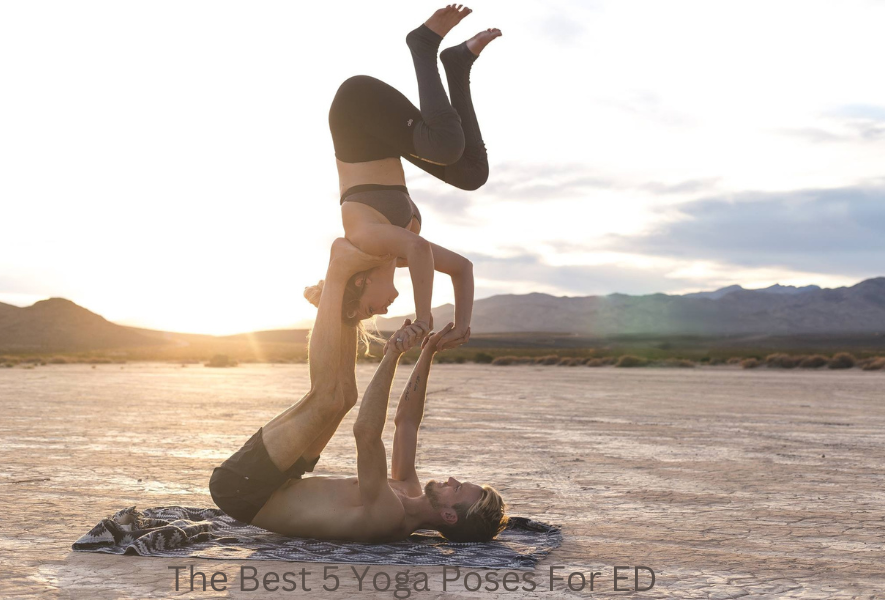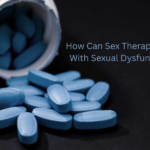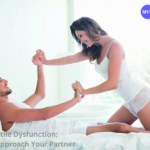Erectile Dysfunction (ED) is a common concern affecting men of all ages and backgrounds. While medical interventions exist, many individuals seek alternative therapies to complement their treatment or manage milder cases. Yoga, renowned for its holistic approach to health and well-being, offers a range of poses that can support Erectile Dysfunction management. In this comprehensive guide, we’ll delve into the top five yoga poses specifically tailored to address Erectile Dysfunction, providing insights into their benefits and how they can be integrated into your wellness routine.
ED Medications
Cenforce 100 mg Cenforce 150 mg Cenforce 200 mg Vidalista 60 mg Kamagra oral jelly Vidalista 20 mg Vidalista 40 mg
1. Supta Baddha Konasana (Reclining Bound Angle Pose)
Supta Baddha Konasana, commonly referred to as the Reclining Bound Angle Pose, is a restorative posture that targets the pelvic region. To perform this pose, lie on your back and bring the soles of your feet together, allowing your knees to fall open to the sides. This gentle stretch helps release tension in the groin area, improving blood flow to the pelvic region and promoting relaxation.
2. Paschimottanasana (Seated Forward Bend)
Paschimottanasana, known as the Seated Forward Bend, is an excellent pose for promoting circulation and flexibility in the lower body. This forward fold stimulates the pelvic area and stretches the hamstrings, aiding in alleviating ED symptoms by enhancing blood flow to the genital region.
3. Setu Bandhasana (Bridge Pose)
Setu Bandhasana, or the Bridge Pose, is a backbend that strengthens the pelvic floor muscles and stimulates the reproductive organs. Pressing into your feet, lift your hips toward the ceiling while keeping your shoulders grounded. This pose not only improves blood circulation but also helps combat stress and fatigue, both of which can contribute to Erectile Dysfunction.
4. Uttanasana (Standing Forward Bend)
Uttanasana, the Standing Forward Bend, is a simple yet effective pose for increasing blood flow to the pelvic region. Stand with your feet hip-width apart, exhale as you hinge forward from the hips, and bring your hands to the floor or grasp your elbows. This gentle inversion encourages blood circulation to the pelvic area, promoting vitality and relieving tension in the lower back and hips. The advantages of yoga for erectile brokenness are complex. Yoga diminishes pressure and tension, which are normal supporters of ED. Moreover, certain yoga presents target explicit muscles associated with sensual capability, assisting with further developing blood stream to the pelvic area and fortify pelvic floor muscles.
5. Viparita Karani (Legs-Up-the-Wall Pose)
Viparita Karani, also known as the Legs-Up-the-Wall Pose, is a rejuvenating inversion that can benefit individuals dealing with ED. Lie on your back and extend your legs upward against a wall, forming a 90-degree angle with your body. This pose encourages venous blood flow from the legs back to the heart, reducing pressure in the pelvic area and promoting relaxation.
Yoga is a comprehensive practice that tends to both the physical and mental parts of sexual wellbeing. By integrating yoga into your daily practice, you can work on generally speaking prosperity, decrease feelings of anxiety, and upgrade dissemination – all of which can decidedly affect sexual capabilit.
In conclusion, incorporating these five yoga poses into your daily routine can be a valuable addition to your strategy for managing Erectile Dysfunction. By promoting relaxation, improving circulation, and strengthening the pelvic floor muscles, these poses address key factors contributing to Erectile Dysfunction symptoms. Remember to practice mindfulness and listen to your body’s cues while performing these poses, and consult with a healthcare professional for personalized guidance on managing Erectile Dysfunction.
It tends to be brought about by different elements, including states of resembling coronary illness and diabetes, mental variables like pressure and nervousness, and way of life decisions like smoking and unreasonable liquor utilization.



